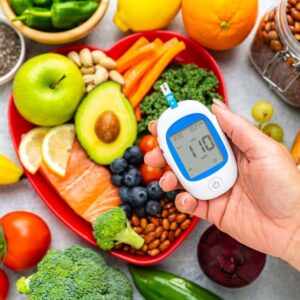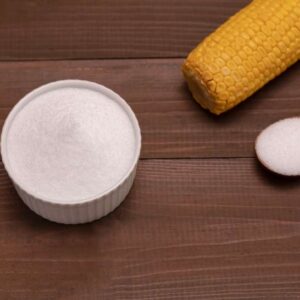
Three “Foods” You Should Never Feed Your Pet
- Three toxins found in popular dog treats. Find out more…
- Revealed: the trouble with table scraps. These two common seasonings could be deadly.
- Discover two foods you can feel good about giving to your best buds.
Dear Living Well Daily Reader,
Wheat flour… soy flour… corn syrup, really!?
Wait… that can’t be right…
That’s the only natural ingredient… and it’s toxic to dogs!
A couple weeks ago, a friend and I went shopping for pet supplies.
My friend, who is a meticulous eater, is even pickier when it comes to her pup. So when she started to read off the ingredients in Snausages, a popular dog treat, she was blown away.
And frankly, I was too.
Once I took a deeper look at the label, I couldn’t believe the garbage that pet treats are made of. But what was even more upsetting, the only natural food in the treat is toxic to dogs.
In fact, it can even be deadly. We will reveal exactly what it is in just a minute Plus, we’ll provide you with few healthy treat solutions for your treasured companions.
After scoping the several labels, including those of “pet-friendly” sandwich cookies and non-nutritional slop shaped like chicken bones and toothbrushes, I soon realized that they were all bad news!
I’ve narrowed down the top three most common unhealthy ingredients being passed off as “foods” for cats and dogs – while they all were upsetting, the last one was downright shocking!
![]() 1. Sugar
1. Sugar
Sugar is hiding in many treats. This includes ingredients like corn syrup, dextrose, and molasses. While molasses may be the least offensive here, added sugars serve no nutritional purpose for your cat or dog, just as they don’t for you. It’s not classified as toxic to either species though it may lead to obesity, diabetes, and tooth decay in your pet.
When it comes to our feline friends, there’s absolutely no need to bother with sugar — they can’t even taste it. Research from the Monell Chemical Senses Center shows that cats lack the genetic coding linked to tasting sweet foods. This means any added sugar in your cat’s treats isn’t providing pleasure but instead setting your little buddy up for health issues.
![]() 2. Wheat, Corn, Soy
2. Wheat, Corn, Soy
All the treats I investigated had some form of wheat, corn, or soy. Right off the bat, this means there are GMOs in your pet’s treats. And where there are GMOs, there could be glyphosate, which might mean trouble for your pet’s stomach.
Per Dr. Michael Fox DVM, health conditions like allergies, skin and organ issues, and inflammatory bowel disease may be consequences of feeding your pets foods and treats with GMO products.
In addition to the GMO issue, dogs are selective omnivores and cats are carnivores. Evolutionarily speaking, it doesn’t make sense to feed animals grains. Due to their primitive digestive systems, dogs and cats have don’t have the gastric support to break down cereal grains. This means these hard-to-digest fibers may remain undigested and could eventually lead to the same types of digestive issues associated with GMOs.
That being said, it doesn’t mean the occasional veggie or plant-based treat isn’t right for your pet. We will share few options in a bit.
![]() 3. Garlic and Onions
3. Garlic and Onions
All members of the Allium species of plants are highly toxic to dogs and cats. These include onions, garlic, leeks, shallots, chives, and scallions. Once ingested, these plants can cause red blood cell damage. In a toxic dose, this can result in anemia, internal organ damage or failure, and even death.
And that’s why I was shocked to see garlic powder as a listed ingredient for Snausages. It’s impossible to know the amount of garlic powder in these, but any amount has the potential to cause a dangerous reaction.
Also, since garlic and onions are such popular seasonings in human foods, Allium poisoning is one reason why table scraps are discouraged as treats, unless they are unseasoned.
![]() Full Flavor, No Threat
Full Flavor, No Threat
By now you may be thinking, Are any treats safe for my pets?
The answer is yes.
But you won’t find many in the aisles of your local pet store.
You see, even many grain-free and natural pet treats still have added sugars in them. So it’s in your pet’s best interest to provide them with an unprocessed treat.
Here are two to get you started:
![]() Carrots and Green Beans
Carrots and Green Beans
For dogs, raw carrots and green beans are good choices. Just be sure to chop them small to prevent any choking hazards. If your buddy is a little older, cooking these veggies is a good idea, especially if they have dental or digestive issues. Be sure to skip the seasonings.
While cats don’t require any veggies in their diets, it’s fun to give them an occasional treat. Carrots and green beans that are cooked without seasoning and chopped finely make for good cat treats without added toxins.
Live well,

Natalie Moore
Managing editor, Living Well Daily
Sources
[2] Strange but True: Cats Cannot Taste Sweets
[3] Herbicide Glyphosate found in Pet Foods
[4] Is Grain Free Dog Food the Way to Go?
Written By Natalie Moore
Natalie Moore is a dedicated health researcher with a passion for finding healthy, natural, and science-based solutions. After a decade of direct healthcare experience in western and natural medicine, she was involved in public health research before joining Living Well Daily.
View More Free Articles
This Sleep Mistake Is Doubling Your Disease Risk
Think your inconsistent bedtime is just a harmless habit? Think again. New research reveals that going to bed at different times each night isn’t just making you tired—it could be dramatically increasing your risk of serious diseases. But the key to making sure poor sleep doesn’t derail your health goals likely isn’t what you think…....
Stop Obsessing Over Diet Trends
Can we stop with the endless diet debates already? Every other week there’s a new headline shouting about which diet is best for weight loss, heart health, or diabetes. Paleo, keto, low-carb, high-protein… it’s exhausting. And now, a new meta-analysis is out comparing the Mediterranean diet, the DASH diet, and something called AHEI (that’s “Alternative...
A New Reason to Ditch Processed Junk
If you’ve ever walked the inside aisles of your local grocery store and thought, “This is all just junk,” your instincts were spot on. A new study published in the journal Thorax just added another red flag to the list of dangers linked to ultra-processed food—a 41 percent higher risk of lung cancer. That’s right....
When Being Winded on Stairs Is Serious (And When It Isn’t)
I had an athlete visit me recently because he experienced shortness of breath while climbing stairs. He is in great shape, so he was worried about what it might mean. “Doc,” he said, “I run five miles three times a week. Why am I huffing and puffing after two flights of stairs?” His concern is...
Study EXPOSES Hidden Danger Lurking in Your Car
We think of our homes and cars as safe havens. But according to a startling new study, they may be flooding your lungs with microscopic plastic particles—every single day. Researchers in France recently found that adults inhale an average of 68,000 microplastic particles daily from indoor air alone. To put that in perspective, that’s about...
Mailbag: Is Modern Food Making You Snore?
“What can cause snoring, and is there a way to correct this issue?” —Seeking Silence Hi Seeking, Snoring happens when the soft tissues in your throat relax and vibrate as air passes through during sleep. While several factors can cause snoring—from sleep position to nasal congestion—I want to share one trigger that might surprise you....
Simple Food Swap SLASHES Dementia Risk 28%
Let’s be honest… who would jump at the chance to cut their dementia risk by 28 percent. And no, you don’t need to run marathons, survive on broccoli, or learn to play the zither (whatever that is) to make it happen. All it takes is one easy swap—something that’s probably already in your refrigerator. Researchers...
This SMART Floss Exposes Hidden Health Danger
Scientists have created dental floss that doesn’t just clean between your teeth—it also tracks your stress while you’re flossing. Now, I know what you’re thinking… “Great—now even flossing is going to stress me out by telling me how stressed I am.” But this fascinating new tool from Tufts University could be a game-changer for understanding...
Is This "Safe" Sweetener Damaging Your Brain?
The headlines are alarming… “Popular Sugar Substitute Linked to Brain Cell Damage” and “Erythritol Could Damage Critical Brain Barrier” are just two of the dozens I’ve spotted recently. But before you toss every sugar-free product in your pantry, let’s take a closer look at what this study actually shows—and what it doesn’t. The latest research...
This Summer Threat Could SPIKE Your Blood Sugar
Picture this… It’s another scorching hot summer day. You crank up the air conditioning while watching the weather forecast, which predicts yet another “record-breaking” heat wave. It’s starting to feel like just another miserably uncomfortable summer. But what you might not realize is that—if you have diabetes—those rising temps could do far more damage to...









